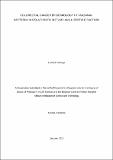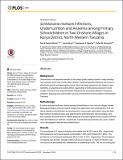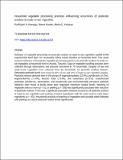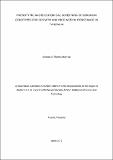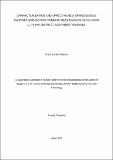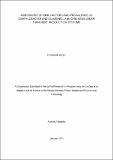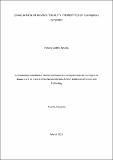Search
Now showing items 21-30 of 306
Risk assessment for dietary exposure of pesticides among vegetables consumers in Arusha, Tanzania
(NM-AIST, 2019-03)
Information on the extent of pesticide residues in vegetables from Tanzania and risk of dietary exposure to these residues among vegetable consumers is limited. This research assessed the risk of dietary exposure of pesticide ...
Colorectal cancer epidemiology in Tanzania: patterns in relation to dietary and lifestyle factors
(NM-AIST, 2019-01)
Chronic non-communicable diseases are increasingly captured as contributing to morbidity and mortality in low and middle income countries. This study has designed to investigate the epidemiology of colorectal cancer and ...
Schistosoma mansoni Infections, Undernutrition and Anaemia among Primary Schoolchildren in Two Onshore Villages in Rorya District, North-Western Tanzania
(Plos One, 2016-12-09)
Background
Undernutrition and anaemia remains to be a major public health problem in many developing
countries, where they mostly affect children. Intestinal parasitic infections are known to
affect both growth and ...
Household vegetable processing practices influencing occurrence of pesticide residues in ready‐to‐eat vegetables
(John Wiley & Sons, 2019-11-19)
Influence of vegetable processing on pesticide residues in ready‐to‐eat vegetables studied at the experimental level does not necessarily reflect actual situation at household level. This study assessed influence of household ...
Research Article Influence of Water Sanitation,and Hygiene Practices on Common Infections Under-five Children in Longido and Monduli Districts of Arusha Tanzania
(Journal of Environmental and Public Health, 2017-09-25)
The study aimed at assessing water, sanitation, and hygiene practices and their influence on infectious diseases among underfive
children in semipastoral communities of Arusha. The study was cross-sectional in design. ...
Pinpointing baobab (Adansonia digitata [Linn. 1759]) population hotspots in the semi‐arid areas of Tanzania
(John Wiley & Sons, 2019-11-15)
The impact of unsustainable land‐use conversions, changes in climate and anthropogenic activities on abundance and distribution of baobab populations was assessed in semi‐arid regions of Tanzania. Baobabs were sampled in ...
Phenotypic and biochemical screening of sorghum genotypes for growth and rice weevil resistance in Tanzania
(NM-AIST, 2019-04)
The current study characterised sorghum genotypes based on their growth morphological variations; identified phenotypic and biochemical traits, and screened them for resistance to rice weevil (Sitophilus oryzae). A total ...
Characterization and effectiveness of indigenous rhizobia nodulating common bean (phaseolus vulgaris l.) in Hai district, Northern Tanzania
(NM-AIST, 2019-04)
A study to characterise indigenous rhizobia nodulating bean (Phaseolus vulgaris L) was conducted from April, 2018 to November, 2018 in Hai District. Thirty rhizobia organisms were isolated from bean root nodules and grown ...
Assessment of risk factors and prevalence of campylobacter and salmonella in chickens under different production systems
(NM-AIST, 2019-01)
The human population growth and increased urbanization in Tanzania, stimulates emerging of new livestock systems with variable intensification levels. In poultry production, traditional free-range backyard farming is now ...
Evaluation of in vivo toxicity properties of commiphora campestris
(NM-AIST, 2019-03)
Commiphora campestris leaves and stem bark are used by Pare society for management of infectious diseases, therefore this research evaluated in vivo toxicity of C. campestris. The leaves and stem bark were pulverized, ...


